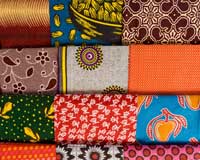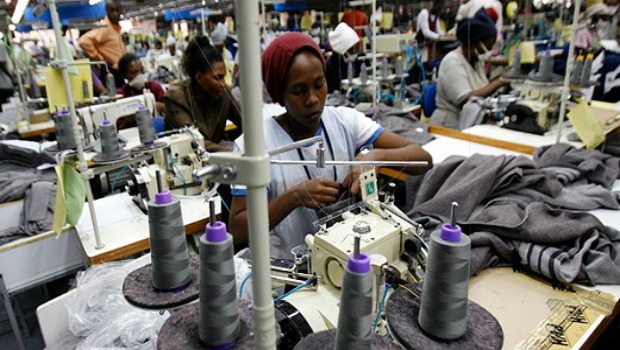"Of late, Kenya has been inking its name in the global textile market and is touted to be one of the next centres for apparel sourcing in East Africa alongside Ethiopia. For years, countries such as China, India and Bangladesh have been meeting global exports textile demand but owing to rising production cost in Asian countries, importers are scouting for cheaper place for supplies. With an area of 581,309 sq km and a population of around 47 million, the Republic of Kenya is a leading country in Africa. Its capital and largest city, Nairobi, has been dubbed the hub for East Africa for long."

Of late, Kenya has been inking its name in the global textile market and is touted to be one of the next centres for apparel sourcing in East Africa alongside Ethiopia. For years, countries such as China, India and Bangladesh have been meeting global exports textile demand but owing to rising production cost in Asian countries, importers are scouting for cheaper place for supplies. With an area of 581,309 sq km and a population of around 47 million, the Republic of Kenya is a leading country in Africa. Its capital and largest city, Nairobi, has been dubbed the hub for East Africa for long.
Rich textile history

Cotton production started in Kenya in the 1900s by the colonial administration. To protect the local cotton industry, the Kenyan government introduced 100 per cent duties on imports after independence. The industry was also heavily subsidized, which greatly boosted production capacity in the 70s and mid-80s. However, it started declining from the mid-80s. The availability of used clothes – locally known as ‘mitumba’ – at a cheap price deeply impacted the textile industry and led to its fall by 1990s. The year 2000 again saw the industry’s rise in Kenya, thanks to its inclusion in the African Growth and Opportunity Act (AGOA), which also happened to be the first country to be accredited as an AGOA beneficiary. Since its inclusion, in six-year period (2000-2006), Kenya’s clothing sales to the US increased from $44 million to $270 million.
Investors’ haven
Kenya climate is suitable for growing cotton as the crop grows well in semi-arid areas. Kenya also offers large areas of cultivable land mass for cotton. Kenya has abundant and relatively well-educated population. Therefore, skilled and unskilled labour forces are readily available at reasonable rates. It has vibrant manufacturing industry, aided by infrastructure. The seaport at Mombasa – located at the East African coast – is linked to the mainland by railways and the Great North Road. Kenya is strategically located for investors wanting to access the East and Central African market. Kenya is also a regional hub for airlines allowing for easy access from and to any part of the world. Currently, over 40 billion shillings ($400 million) worth of apparels, including jeans and towels, consumed in the US are manufactured in Kenya’s Export Processing Zone (EPZ). This is projected to hit 100 billion shillings by 2018, according to the Industrialisation Cabinet Secretary Adan Mohamed.
Positive policy initiatives
As an enabler to boost growth, Kenyan government has drafted medium-term economic growth strategy, ‘Kenya Vision 2030’. They have identified the textile and clothing sector as a potential key driver of the country’s industrialisation. According to the Kenya National Bureau of Statistics (KNBS), the Export Processing Zones (EPZ) recorded a 12.1 per cent growth in sales in 2015. The growth was mostly driven by apparel exports under AGOA. As per the Economic Survey 2016, total EPZ sales went up by 12.1 per cent from Sh57.2 billion in 2014 to Sh64.1 billion in 2015. The number of local employees increased 8.7 per cent to reach 50,523 in 2015. The bulk of employment was in the garment/apparel enterprises with a total of 41,548 persons mainly due to expansion of existing apparel and agro-processing farms.
Garment industry
The Kenyan garments industry comprise of 22 large foreign-owned companies operating in the Export Processing Zones (EPZs), 170 medium and large companies, eight ginneries, eight spinners, 15 weaving and knitting companies, nine accessories manufacturers and over 75,000 micro and small companies, including fashion designers and tailoring units. With an estimated 30,000 workers, Kenya’s apparel industry, valued at $330million a year in 2014, according to the Kenya Association of Manufacturers, is still relatively small compared to Bangladesh, which has a $28 billion RMG export market and the industry employs around 4.4 million people. But Kenya is taking steps in the right direction. China, the world number one apparel player, has been working closely with the African industry. There are also possibilities that Bangladesh RMG industry, the second largest global exporter, can play a collaborative role with the Kenyan as well as African RMG and textile industries.












